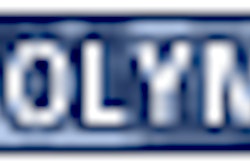Springer Verlag-New York, New York, 2002, $95
For nearly two decades, it was possible to raise a laugh by asserting that PACS was the technology of the future -- and always would be. No longer. PACS has moved from a developing technology to the mainstream of radiological practice. This timely book, based on the experience of leaders in the field who have implemented PACS at their institutions, will be a useful guide to the thousands of imaging facilities that will be installing PACS in the near future.
Over the past twenty years, the questions that bedeviled the adoption of PACS have changed. Early on, systems were generally too slow to be useful and too expensive to be practical. That has changed, not so much because of developments in the PACS arena as because of developments in the computer world, where storage has grown more capacious; displays have grown brighter; and networks have grown more reliable and easier to connect; and everything has grown faster and cheaper.
But many issues remain. The authors take these up one by one, starting with certain techniques of financial modeling that may be useful in justifying PACS to hard-eyed accountants and CFOs. They make a useful point that the arguments in favor of PACS can be arrayed along a continuum of credibility ranging from savings on film (certain to materialize) to expanded business due to referring physicians’ delight at being able to access images (which may easily be overshadowed by other considerations).
In justifying PACS, they suggest that proponents proceed only as far along the continuum as is necessary to reach minimal justification, thus avoiding the awkwardness of weak arguments.
Subsequent sections deal with the components of PACS (networks, workstations, storage) and the remaining issues in PACS (DICOM, image acquisition, workflow, compression, speech recognition, and legal issues).
Like most books by multiple authors, this one is uneven, ranging from superficial to masterful. The chapter on DICOM by David Clunie and John Carrino is particularly well done, making clear a murky and arcane subject.
Likewise, the chapter on workflow by Eliot Siegel and Bruce Reiner provides much of the only available data on actual PACS experience, which will be useful to anyone seeking to justify PACS.
By Philip G. Drew, Ph.D.AuntMinnie.com contributing writer
March 5, 2002
Philip G. Drew is principal of the Concord Consulting Group. For more information, visit their Web site at www.concordcg.com.
If you are interested in reviewing a book, let us know at [email protected].
The opinions expressed in this review are those of the author, and do not necessarily reflect the views of AuntMinnie.com.
Copyright © 2002 AuntMinnie.com



















